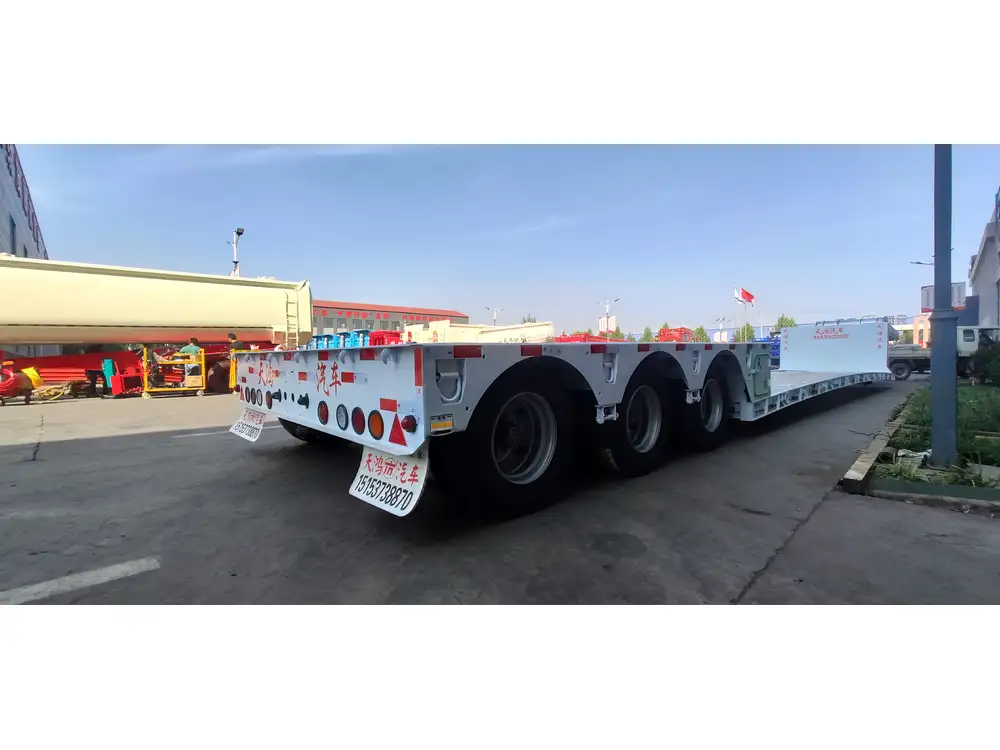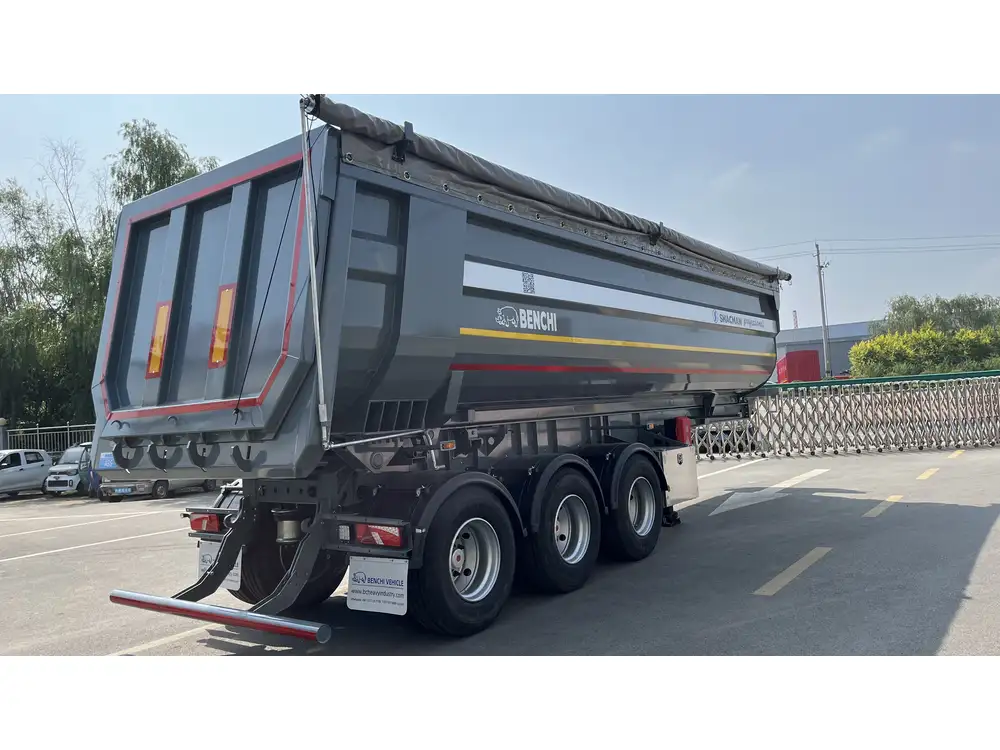In the vast and complex world of logistics and transportation, understanding the dimensions of semi-trailers is crucial for both manufacturers and operators. The average semi-trailer serves as a fundamental unit of cargo transport, while its dimensions dictate everything from load capacity to maneuverability. In this comprehensive examination, we delve into the intricacies of semi-trailer lengths, industry standards, regulatory considerations, and practical implications.
Understanding Semi-Trailer Lengths
Industry Standards and Regulations
When discussing the average length of a semi-trailer, it’s important to first consider the regulatory framework that governs these vehicles. In the United States, the Federal Highway Administration (FHWA) sets guidelines that define legal sizes for commercial trucks and trailers.
- Standard Lengths: The most common length for a semi-trailer in the U.S. tends to be approximately 53 feet. This measurement has become the industry standard for most freight operations.
- Maximum Lengths: While the average is 53 feet, the permissible maximum length for semi-trailers in many states can reach up to 59 feet for specific configurations. Compliance with these regulations is essential to avoid penalties and ensure safety on the roads.
| Region | Standard Length | Maximum Length |
|---|---|---|
| United States (US) | 53 feet | 59 feet |
| Canada | 53 feet | 59.5 feet |
| Europe | 13.6 meters (approximately 44.6 feet) | 18.75 meters (approximately 61.7 feet) |

Variability in Design
Not all semi-trailers are created equal. Various designs cater to different cargo types, leading to variances in dimensions:
- Flatbed Trailers: Typically, flatbed semi-trailers range from 48 to 53 feet but can extend to 60 feet in certain configurations. Their design allows for easy loading and unloading of oversized cargo.
- Reefer Trailers: Refrigerated trailers, or “reefers,” often maintain an average length of 53 feet, tailored for perishable goods while maintaining temperature control.
- Tankers: These trailers can vary significantly in size based on their intended use, typically ranging from 40 to 60 feet in length.
Special Considerations for Unique Hold Types
Certain industries require specialized trailers, which can further complicate the discussion around average lengths:
- Auto Haulers: These are typically 48 to 53 feet long and designed to transport vehicles safely and efficiently.
- Lowboy Trailers: Essential for transporting heavy equipment, lowboys can range from 24 to 30 feet for a standard configuration, though they can be extended as needed.
- Step Deck Trailers: These specialized trailers often measure 48 feet, allowing for loading of taller cargo that cannot comply with standard height restrictions.
Determining the Right Length for Your Needs
When selecting the appropriate semi-trailer for specific tasks, numerous factors come into play, such as:
- Type of Cargo: Heavy or oversized cargo may necessitate longer trailers or specialized designs, while standard freight might fit comfortably in a 53-foot trailer.
- Regulatory Considerations: Operators must remain compliant with local and state regulations regarding maximum lengths and configurations.
- Route Considerations: Urban areas may impose restrictions on vehicle sizes, impacting what serves as the optimal trailer choice for specific routes.
- Loading and Unloading Sites: Availability of space during loading and unloading can affect the choice of trailer length. Environments requiring tight maneuverability may favor shorter trailers.

The Cost-Effectiveness of Trailer Size
The length of a semi-trailer also has financial implications. Consider the following factors:
- Fuel Efficiency: Longer trailers may incur greater fuel consumption, leading to increased operating costs. Conversely, a shorter trailer might optimize fuel use but may limit cargo capacity.
- Cargo Capacity: The length directly affects how much cargo can be transported. Balancing length and load capacity is essential for maximizing profitability.
Adapting to Modern Logistics Requirements
Emerging Trends in Trailer Design
In today’s rapidly evolving logistics landscape, many manufacturers are exploring innovative designs that challenge traditional standards. Some key developments include:
- Aerodynamic Trailers: Designed to reduce air resistance, these trailers can optimize fuel efficiency, making them increasingly popular in freight operations.
- Smart Trailers: Equipped with monitoring systems for temperature, location, and cargo integrity, these trailers allow greater visibility and reduce risk in transport.
- Convertible Trailers: Featuring adjustable components, these trailers can adapt to differing cargo needs and sizes, offering operational flexibility.

Environmental Considerations
As industries continue to prioritize sustainability, trailer lengths and configurations are adapting:
- Implementing Green Technologies: Manufacturers are focusing on trailers that support alternative fuel sources, reducing carbon footprints while maximizing payload.
- Emphasizing Load Optimization: By using advanced cargo management systems, logistics companies can better utilize their trailer lengths, ultimately leading to fewer trips and lower emissions.
Conclusion: Navigating the World of Semi-Trailer Lengths
In summary, the average length of a semi-trailer—predominantly around 53 feet—serves as the cornerstone of modern freight operations. However, multiple factors influence this average, including regulatory frameworks, cargo types, and advances in trailer technologies. As we adapt to changing industry demands, understanding these dimensions will remain vital for operators seeking efficiency, compliance, and profitability in their logistics efforts.
Frequently Asked Questions (FAQ)
What is the standard length for a semi-trailer in Canada? The standard length for a semi-trailer in Canada is also typically 53 feet, with a legal maximum length of 59.5 feet.
Are there restrictions on the weight of semi-trailers? Yes, weight restrictions vary by state and type of road. It’s essential to check local regulations for maximum allowable weights to ensure compliance.
Can a semi-trailer be longer than the maximum legal length? In some cases, special permits can allow for oversized loads, but this typically requires a specific route plan and adherence to additional regulations.
What are the implications of using a longer semi-trailer? While longer trailers can carry more cargo, they may also present challenges regarding maneuverability and increased fuel consumption.
How can companies stay compliant with semi-trailer regulations? Regularly reviewing federal and state guidelines and investing in training programs for drivers can help ensure compliance and mitigate risks.



